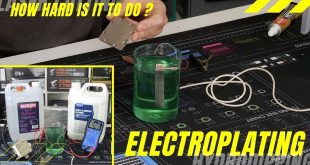Scientists at the University if Colorado have successfully created a system whereby particles can be injected into liquid crystal – bringing order to chaos – and opening up the possibility of a revolutionary new kind of screen within the decade. That's now been explained and augmented by a clever maths chap from Amherst College. KitGuru injects some biscuit particles into liquid caffeine and sets about the research.
A brilliant mathematician called Robert Kusner spent over 30 years considering what happens when particles are introduced to liquid crystal. Well, actually, he started with some questions about geometry and topology and, half a lifetime later, it looks like his work could yield a phenomenal change for all of us technology users and abusers.
Injecting a particle into liquid crystal creates some amazingly beautiful patterns, which means that light is being adjusted. If that adjustment could be controlled, then you could usher in a new way of manufacturing screens.
You know that the universe has a sense of humour, when you realise that Robert works at Amherst College (part of the University of Massachusetts) and his college's motto is ‘Let them give light to the world'.
His work started with the complex mathematics around geometry, topology, curves and surfaces. Probably the most common example of this kind of occurrence would be the various ways that soap bubbles change colour – as time progresses and/or as a bubble comes into contact with various pollutants/particles.
In another interesting twist, the question as to why soap bubbles change colour was part of the Oxbridge entrance exams, last century. If the professors setting the questions had given it a little more thought, then maybe Britain could have pioneered the wonderfully named ‘topological liquid crystal colloids‘. Never mind. Toodle-pip, hats off and congratulations to the fine American professors behind this revolution. At least he is a Member and Visiting Fellow of Isaac Newton College Cambridge.
One of Robert's collaborators on this project was Ivan Smalyukh, who summed up the achievement succinctly by saying “Our study shows that interaction between particles and molecular alignment in liquid crystals follows the predictions of topological theorems, making it possible to use these theorems in designing new composite materials with unique properties that cannot be encountered in nature or synthesized by chemists. These findings lay the groundwork for new applications in experimental studies of low-dimensional topology, with important potential ramifications for many branches of science and technology”.
Right now, we'd imagine that all of the universities involved will be in constant contact with the major LED powers of our time. If all goes well, then maybe Robert's research could be instrumental in making 4K TV ‘something affordable for the masses'.
In terms of personal beliefs, Robert is a firm advocate of alternative transport and has been pushing a bicycle-centric agenda for more than 15 years. We reckon he'll have a much greater chance of pushing these kind of policy changes through once he's revolutionised the world of IT.
Truly great scientists all know that their best work comes on the shoulders of giants – as well as the army of researches who spend years working on the mundane. Without the work of all those people, Robert may not have been able to apply his specific knowledge and opened up a new industry. That's it, just a nod to the faceless mass of experts before we show you a shot of the hero himself.
.

KitGuru says: Speaking with a senior engineer at Sony about 10 years ago, we were told that the Japanese giant was surprised that current LED/LCD/TFT technologies had lasted so long. Sony had NOT invested in its own manufacturing etc, because it genuinely believed that the screens we use today were ‘transient' – a stop gap on the way to something better. With the help of Robert Kusner's work, that future may be here very soon, but will Sony still be making TVs when it does?
Comment below or in the KitGuru forums.
 KitGuru KitGuru.net – Tech News | Hardware News | Hardware Reviews | IOS | Mobile | Gaming | Graphics Cards
KitGuru KitGuru.net – Tech News | Hardware News | Hardware Reviews | IOS | Mobile | Gaming | Graphics Cards


